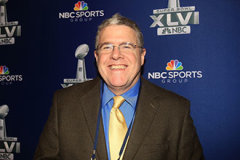By Chris Lingebach
“I know that our site, we’ve talked about it, and we’re not going to use Redskins in our writing,” Klemko said on CBS Sports Radio’s MoJo with Chris Moore and Brian Jones.
“We’re going to say ‘Washington football team,’” Klemko added. “And it’s not something we’re going to publicize or write about. We’re just not going to do it.”
TheMMQB.com, an offshoot of Sports Illustrated, is a preeminent source for NFL news, and collectively, its feature writers–made up of Robert Klemko, Greg Bedard, Jenny Vrentas and the site’s founder, Peter King–account for more than 1.2 million Twitter followers. So there’s strength in numbers on this one.
By Jay Busbee
Regardless of what team owner Daniel Snyder and a vocal group of pro-Redskins-name fans hope, wish or believe, the name issue's coming to a head. Somebody sometime soon is going to ask Robert Griffin III, point-blank, if he supports the use of the name "Redskins." And the way he answers will determine the shape of this story for the immediate future. If he thinks the name should go, it'll eventually go. And if he thinks it should stay? Then Snyder has all the court-of-public-opinion weight he needs to fend off any critics.
This story's not going anywhere, folks, like it or not.
A Facebook friend and I briefly discussed this development:
I wonder how Dan Snyder thinks this will end. After decades of protests, is he going to repeat the "honor" and "tradition" argument one more time? After a thousand times of dismissing this argument, will every activist, pundit, and publication suddenly reverse themselves?
"Oh, honor and tradition? Now we get it. We're sorry we criticized you so many times over the last few decades. Now that we understand your position, we'll accept the name without any further fuss."
I don't see any scenario in which all the "Redskins" opponents reverse themselves. There's no reason for them to do so--no argument that could change their minds.
This protest can go only in one direction. Namely, increasing pressure on Snyder until he caves in.
What's the over/under on how long he'll hold out? A year? If a publication such as the New York Times or Sports Illustrated changes its position, I'd say he's toast.
A columnist provides some context:
The ugly truth about our love of ‘Redskins’
By Jonathan Zimmerman
As the start of the NFL season draws near, I’ve got a question for you: How is the Chink any worse than the Redskin, the feather-clad mascot of Washington’s pro football franchise?
It isn’t. The only difference is that the Redskin purports to be American Indian, not Chinese. And unlike any other ethnic group, Native Americans remain fair game for bigotry on game day.
At the same time, though, the mascots also confirmed whites’ sense of superiority. With their headdresses and beads, their tomahawks and war whoops, the Indian mascots seemed like throwbacks.
Consider Chief Illiniwek, the University of Illinois mascot who made his first appearance at a 1926 football game with the University of Pennsylvania. A white guy in feathers, Chief Illiniwek performed an “Indian” dance and then shared a peace pipe with a drum major playing William Penn, the opponents’ mascot.
But Illiniwek was a warrior at heart. The second man to play him traveled to the Pine Ridge Reservation in South Dakota, where he bought new regalia for the chief from “an old Indian woman” who had allegedly helped mutilate George Custer after the battle of Little Bighorn.
“It was . . . appropriate that Chief Illiniwek, the embodiment of the Red Men who had vanished before the overwhelming waves of White Men, should return to the land of their fathers,” a University of Illinois booster wrote in 1952. “It was proper and pleasing that the Chief should strut his stuff and perform his ancient ritualistic dances . . . before the packed Stadium of contemporary Palefaces.”
There was only one problem: Chief Illiniwek never existed. Nor did Florida State’s Chief Fullabull or Marquette’s Willie Wampum. They were figments of the white imagination, bearing no connection or resemblance to actual Indians.
For more on the Washington Redskins, see Slate and Mother Jones Ban Redskins and Samoan Delegate Denounces "Redskins."
Below: Peter King.


4 comments:
Had to remind myself this was the sports broadcaster and not the Congressman, the latter not having any reason to discuss sports, but certainly having a history of being a racist. ;)
Peter King is the racist, not Steve?
I tried to find something on Peter King's racism, but all I could find was a reference to another's racism:
http://blogs.ilw.com/entry.php?7359-Rep-Peter-King-Condemns-Rep-Steve-King-s-Racism-By-Roger-Algase
Because Peter King or his website is banning the word "Redskins," you think he's a racist? How do you figure that?
Rob: I think he is referreing to some racism by the Congressman Peter King. A quick search didn't find any, but it might exist.
It is confusing enough with two Peter Kings and a couple of Steve(n) Kings.
Post a Comment